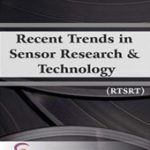[{“box”:0,”content”:”[if 992 equals=”Open Access”]n
n
Open Access
nn
n
n[/if 992]n
n
n
n
n

n
Sanket Arun Adswe, Aditya Ambhure, Sanket Adsule, Jishan Mujawar, S.R. Rohile
n
- n t
n
n
n[/foreach]
n
n[if 2099 not_equal=”Yes”]n
- [foreach 286] [if 1175 not_equal=””]n t
- Student, Student, Student, Student, Professor Department of Electronics and Electrical Engineering, Sinhgad College of Engineering, Pune, Department of Electronics and Electrical Engineering, Sinhgad College of Engineering, Pune, Department of Electronics and Electrical Engineering, Sinhgad College of Engineering, Pune, Department of Electronics and Electrical Engineering, Sinhgad College of Engineering, Pune, Department of Electronics and Electrical Engineering, Sinhgad College of Engineering, Pune Maharashtra, Maharashtra, Maharashtra, Maharashtra, Maharashtra India, India, India, India, India
n[/if 1175][/foreach]
n[/if 2099][if 2099 equals=”Yes”][/if 2099]n
Abstract
nThe induction motor failure detection system proposed in this research is based on the Internet of Things and uses an ESP32, vibration, current, temperature, IR, and Blynk app. An Internet of Things (IoT)-based fault detection system uses sensors to monitor the motor’s condition and transmits the information to a cloud-based platform. The cloud-based software may then analyze the data to identify issues and alert maintenance personnel.An overview of an Internet of Things (IoT)-based fault detection system for induction motors is provided in this article. It makes use of the ESP32 microcontroller, vibration, current, temperature, and IR sensors to measure speed as well as the Blynk app to issue alerts and track health. The motor’s vibration, current, temperature, and speed are all continuously monitored by the system. Through the Blynk app, the user receives an alert from the system if any of these parameters go above a predetermined threshold. After that, the user can take corrective measures to avoid a motor failure.
n
Keywords: IoT, ESP32, induction motor fault detection, vibration sensor, current sensor, temperature sensor, IR sensor, Blynk app.
n[if 424 equals=”Regular Issue”][This article belongs to Recent Trends in Sensor Research & Technology(rtsrt)]
n
n

n
n
n
nn[if 992 equals=”Open Access”] Full Text PDF Download[/if 992] n[if 992 not_equal=”Open Access”]
[/if 992]n[if 992 not_equal=”Open Access”] nnn[/if 992]nn[if 379 not_equal=””]n
Browse Figures
n
n
n[/if 379]n
References
n[if 1104 equals=””]n
- Khan, M. A., Khan, N. U., Iqbal, J., & Ahad, M. F. (2019). Machine Induction Motor Fault Detection Using Cloud Computing and Machine Learning. IEEE Transactions on Industrial Electronics, 67(5), 4144-4154.
- Singh, P., Kumar, R. D., & Kumar, S. S. (2018). IoT-based Machine Induction Motor Fault Detection System Using Blynk. International Journal of Engineering Research & Technology (IJERT), 7(12), 148-152.
- Tran MQ, Amer M, Abdelaziz AY, Dai HJ, Liu MK, Elsisi M. Robust fault recognition and correction scheme for induction motors using an effective IoT with deep learning approach. Measurement. 2023 Feb 15;207:112398.
- Tran MQ, Elsisi M, Mahmoud K, Liu MK, Lehtonen M, Darwish MM. Experimental setup for online fault diagnosis of induction machines via promising IoT and machine learning: Towards industry 4.0 empowerment. IEEE access. 2021 Aug 16;9:115429-41.
- de Jesús Rangel-Magdaleno J. Induction machines fault detection: An overview. IEEE Instrumentation & Measurement Magazine. 2021 Sep 27;24(7):63-71.
- Ashmitha M, Dhanusha DJ, Vijitlin MS, Biju George G. Real time monitoring IoT based methodology for fault detection in induction motor. Irish Interdisciplinary Journal of Science & Research (IIJSR). 2021 May 19.
- Kannan R, Solai Manohar S, Senthil Kumaran M. IoT-based condition monitoring and fault detection for induction motor. InProceedings of 2nd International Conference on Communication, Computing and Networking: ICCCN 2018, NITTTR Chandigarh, India 2019 (pp. 205-215). Springer Singapore.
- Yousuf M, Alsuwian T, Amin AA, Fareed S, Hamza M. IoT-based health monitoring and fault detection of industrial AC induction motor for efficient predictive maintenance. Measurement and Control. 2024 Feb 27:00202940241231473.
- Şen M, Kul B. IoT-based wireless induction motor monitoring. In2017 XXVI International Scientific Conference Electronics (ET) 2017 Sep 13 (pp. 1-5). IEEE.
- Noyjeen E, Tanita C, Panthasarn N, Chansri P, Pukkham J. Monitoring parameters of three-phase induction motor using iot. In2021 9th International Electrical Engineering Congress (iEECON) 2021 Mar 10 (pp. 483-486). IEEE.
nn[/if 1104][if 1104 not_equal=””]n
- [foreach 1102]n t
- [if 1106 equals=””], [/if 1106][if 1106 not_equal=””],[/if 1106]
n[/foreach]
n[/if 1104]
nn
nn[if 1114 equals=”Yes”]n
n[/if 1114]
n
n

n
n
n
n
n
| Volume | 11 | |
| [if 424 equals=”Regular Issue”]Issue[/if 424][if 424 equals=”Special Issue”]Special Issue[/if 424] [if 424 equals=”Conference”][/if 424] | 01 | |
| Received | May 5, 2024 | |
| Accepted | May 15, 2024 | |
| Published | May 28, 2024 |
n
n
n
n
n
n function myFunction2() {n var x = document.getElementById(“browsefigure”);n if (x.style.display === “block”) {n x.style.display = “none”;n }n else { x.style.display = “Block”; }n }n document.querySelector(“.prevBtn”).addEventListener(“click”, () => {n changeSlides(-1);n });n document.querySelector(“.nextBtn”).addEventListener(“click”, () => {n changeSlides(1);n });n var slideIndex = 1;n showSlides(slideIndex);n function changeSlides(n) {n showSlides((slideIndex += n));n }n function currentSlide(n) {n showSlides((slideIndex = n));n }n function showSlides(n) {n var i;n var slides = document.getElementsByClassName(“Slide”);n var dots = document.getElementsByClassName(“Navdot”);n if (n > slides.length) { slideIndex = 1; }n if (n (item.style.display = “none”));n Array.from(dots).forEach(n item => (item.className = item.className.replace(” selected”, “”))n );n slides[slideIndex – 1].style.display = “block”;n dots[slideIndex – 1].className += ” selected”;n }n”}]


